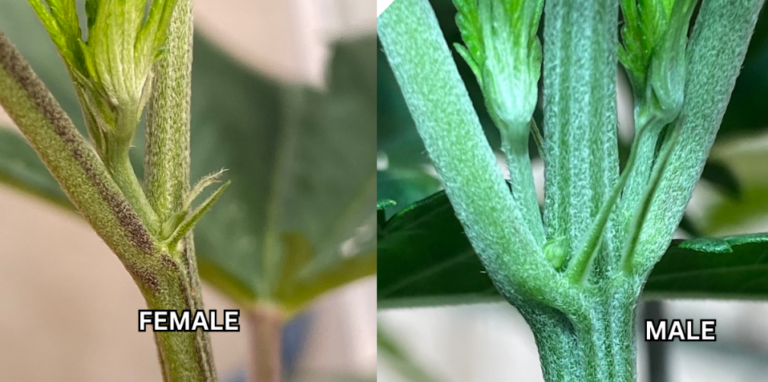Presented by Mary & Main and Evermore Cannabis Co
So you want to grow your own cannabis from seed? Luck you, Maryland allows for legal home grow of cannabis. Know before you GROW! Always check your local state cannabis laws.
>> Click here to see a list of home grow regulations outlined by Maryland GreenScript Cannabis <<
The Basic Steps to Growing from Seed
Germinating Your Seeds
To begin, start by immersing the seed in either a water-filled cup or place it inside a folded, damp paper towel enclosed within a plastic bag. After a soaking period of 24-48 hours, the seed will have absorbed water and begun to split along its seam. You should notice the emergence of a small, pointy, white or cream-colored root tip, known as the taproot. It will grow rapidly, so keep an eye on your seeds during the soaking process and plant them as soon as this taproot becomes visible.
When planting, make a small hole just below the soil surface, ensuring the taproot is pointed downward. Use a small container filled with well-moistened potting mix, preferably one designed for seed starting. Within a few days, you should observe the seedling emerging above the soil, featuring two initial rounded primordial leaves, followed shortly by its first set of single-bladed true leaves.
It’s crucial to maintain soil moisture in the initial stages until the seedling establishes itself. Equally important is the immediate provision of strong lighting for the seedling. Unlike cuttings, seedlings are resilient, adaptable, and ready to thrive with the right combination of fertilizer and intense light. Without adequate lighting, they may elongate and weaken, making them more susceptible to diseases and overwatering problems. Ensuring gentle airflow around the stems during this period is also essential to promote their strength.
For watering the seedling, start with a low-strength vegetative fertilizer. Allow the soil to dry between watering sessions to encourage healthy root growth. When you do water, ensure that it’s a thorough watering, allowing excess water to run off, but avoid letting the seedling sit in standing water. We recommend Jack’s 20-20-20 as an easily accessible and beginner-friendly, one-part formula.
Determining the Sex of Your Plant

As your seedling continues to develop, it will progressively produce additional nodes and larger leaves with an increasing number of leaf blades. If you’re working with regular (non-feminized) seedlings and your goal is to cultivate only female plants (which is typically the case unless you’re breeding), you’ll need to identify the plant’s gender. Around the time the plant has grown and matured to have approximately seven or eight sets of leaves, it will start displaying its gender characteristics, even when subjected to vegetative lighting. This gender determination is based on the presence of either male or female flower parts at the juncture of the leaf petiole, side branch node, and the main stem.





